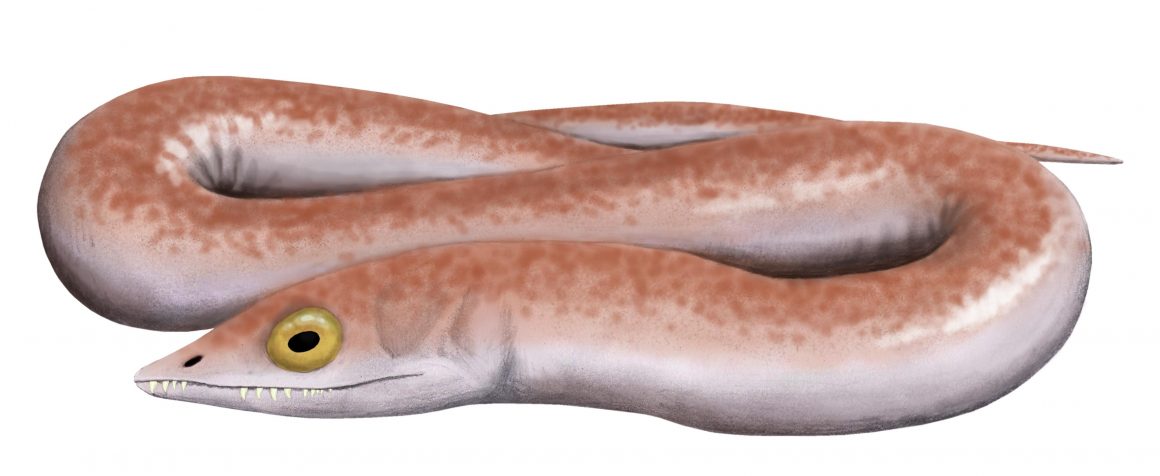
U of C researchers discover fishy secrets of 340-million-year-old fossil
By Jennifer Khil, June 29 2017 —
Two researchers at the University of Calgary Faculty of Veterinary Medicine (UCVM) were published in the international scientific journal Nature for shaking up the evolutionary history of limbed animals.
Jason Anderson, a UCVM professor, and Jason Pardo, a doctoral student supervised by Anderson, used data first collected by Anderson in the late ’90s to reconstruct the anatomy of Lethiscus stocki, an early snake-like animal. Lethiscus evolved over 340 million years ago and has been historically classified as an early tetrapod.
“At some point in Earth’s history, tetrapods — that’s the group that includes you, me, birds, amphibians, reptiles, all of those — that group evolved from fish,” explained Pardo, the study’s lead author.
While tetrapods have since evolved into a number of distinct forms, their immediate ancestors were not as diverse. Known as the stem-tetrapods, these animals were thought to have taken a straightforward evolutionary route from water to land.
“The traditional view of that transition is that the [stem-tetrapods] were very conservative and that the crown group — the group derived from those animals — are highly diverse,” Pardo said. “Lethiscus was thought to be very closely related to modern amphibians or reptiles and to have been the oldest member of that crown group.”
However, micro-CT scanning showed that Lethiscus was more similar to fish than to amphibians or reptiles. These findings place the species among the stem-tetrapods, where its unique, snake-like body stands out amongst its more conservative relatives.
“Lethiscus is very fish-like,” Pardo said. “We were able to pull out up to 90 different features and what our data supports is that as soon as tetrapods evolved, they held the potential already to fit all of these interesting adaptive niches, in contrast to the previous belief that they were all largely the same.”
The process Pardo and Anderson used is known as phylogenetic analysis. By comparing certain distinguishing features of a fossil to those of other species, paleontologists can determine the group an animal most likely belonged to. Pardo and Anderson used this method to find that the snake-like exterior of Lethiscus hides an internal anatomy similar to a fish.
“We looked at features associated with the underlying organization of the head, such as the bones surrounding the brain, the blood vessels feeding the brain and the nerves that exit the brain and innervate things such as the jaws, nose and eyes,” Pardo said. “Placing these into phylogenetic analysis, what we found was that these are extremely primitive organisms.”
Moving Lethiscus to an earlier branch of the evolutionary tree will also change paleontologists’ timeline of the evolution of limbed animals. Since the species was not a tetrapod, the origins of this diverse group may have occurred much later than previously thought.
“If Lethiscus is in fact an animal deep in that fin-to-limb transition, we can no longer use it as our calibration point,” Pardo said. “The next oldest locality is 10 million years younger, so the crown group is at least 10 million years younger than we thought.”
Pardo suggests that these results will require scientists to re-evaluate previous research.
“Trends are a big theme in macro-evolutionary research,” he explained. “People want to know which characteristics predict which and how groups diversify. What we are finding is that the results of all of those trees and analyses are based on an incorrect framework.”
The next steps for Anderson’s lab is to apply similar methods to other specimens and groups to construct a clearer picture of our distant evolutionary past.
“Taking this data we’ve assembled, we have a much clearer story of how these traits evolved,” Pardo said. “We can use this as a springboard to look at these traits in more detail.”
